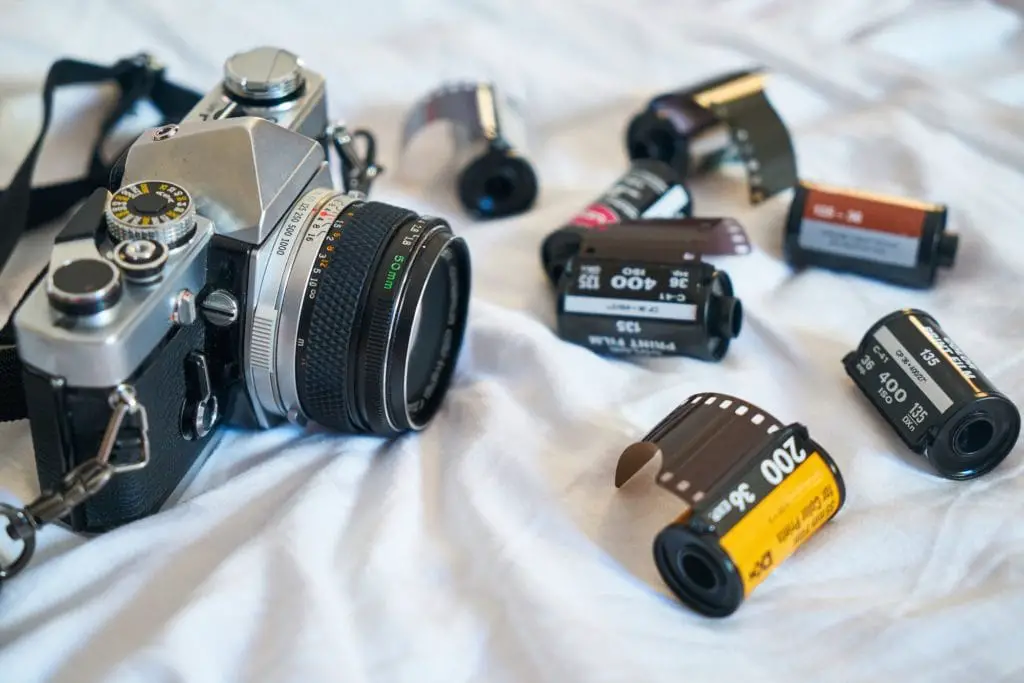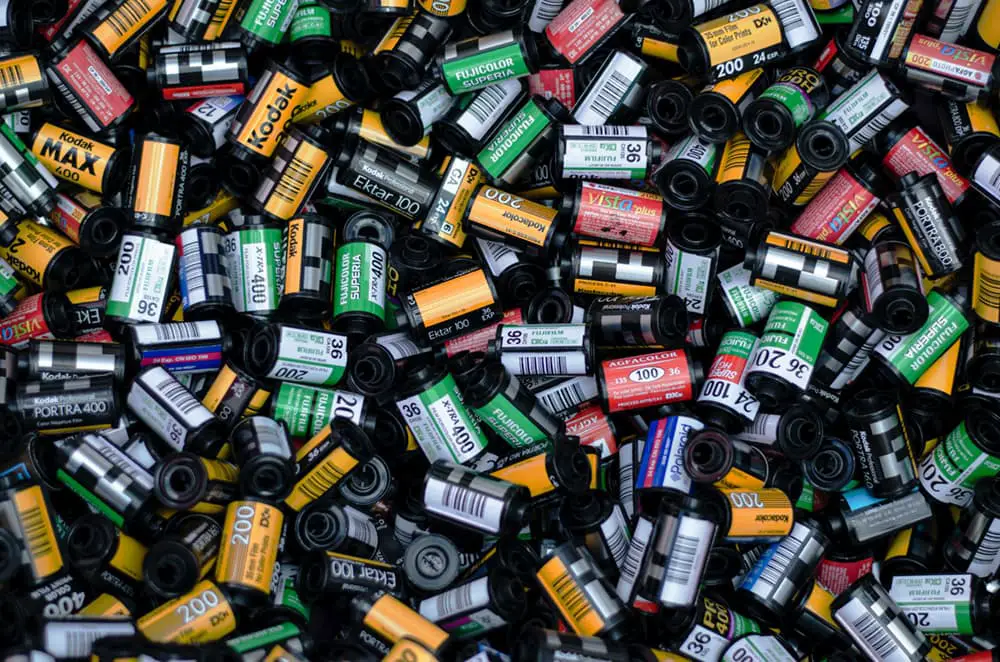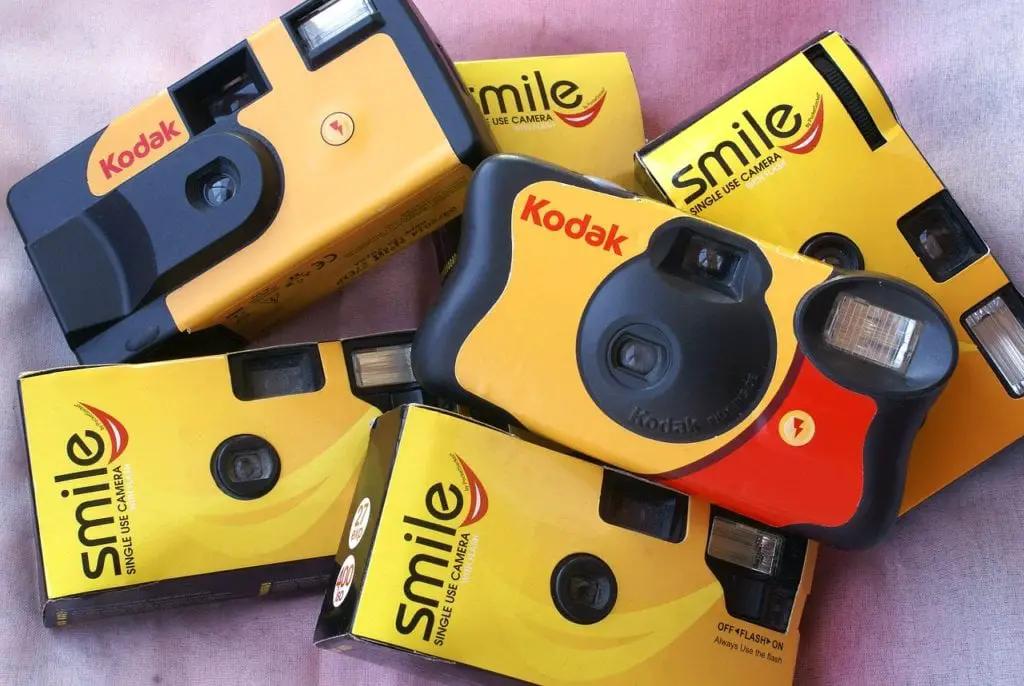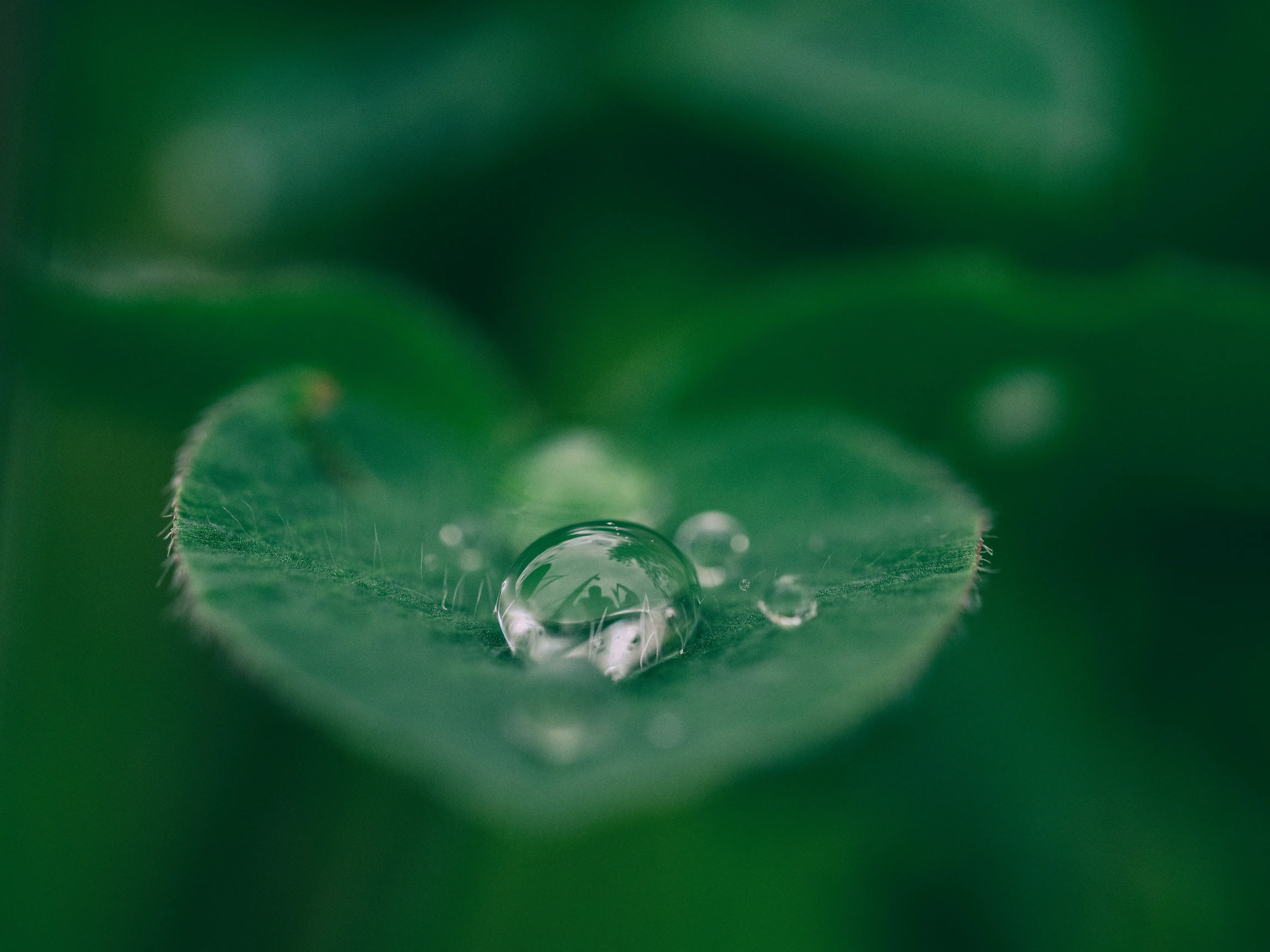Though digital photography has become the most common form of photography, many people are rediscovering the art of film photography. Film photography brings with it a sense of nostalgia and classic photography that is an art form in and of itself that will be lost if it is not nurtured. However, the question many people are not asking themselves is whether using film photography is sustainable.
In some ways, film photography is sustainable. Fewer film cameras are being made than ever before, meaning less plastic and other non-biodegradable materials are being manufactured to meet the demand. However, the manufacture of camera film and chemical process used in developing film can be harmful to the environment so it is important to know how to dispose of them accurately.
Along with the developing of film, there are many other factors to consider when looking at the sustainability of film photography. Take a look below for more details about the sustainability and recyclability of film cameras, disposable cameras, and some practical steps every photographer can take to be more mindful of what they are taking out of and putting into their environment.

Are Film Cameras Sustainable?
Though there is no form of photography that is perfectly sustainable, when it comes to cameras themselves, film cameras hold up pretty well under scrutiny.
The reason for this is that most camera companies are no longer making film cameras, or at least at the rate they used to be, since the invention of digital cameras. Photographers who choose to specialize in and use film photography have to choose from and reuse those cameras that have already been made—the perfect example of recycling in action.
No new cameras being made also means:
- No demand for more materials (such as plastics or glass) to make those cameras.
- Less pollution is created in the process of making those cameras, which is obviously better for the environment.
- Less money is being spent on cameras. When you have a film camera, you will keep using it instead of upgrading to the newest model or technology.
Can Photographic Negatives be recycled?
While film cameras themselves are sustainable and have been recycled and reused many times over at this point, the film that is used inside those cameras is another thing entirely. Photographic film is not recyclable because both black and white and color is coated in silver halide crystals before it is developed, which do not biodegrade and are bad for the environment and, therefore, should not be put into the recycle bin. I recommend checking with your local municipalities using the website Earth911.com to make sure. However, most experts
to make sure. However, most experts will just ask you to put developed negatives into the the trash can since developed film doesn’t have dangerous amounts of silver halide crystals on it.
will just ask you to put developed negatives into the the trash can since developed film doesn’t have dangerous amounts of silver halide crystals on it.
Green Disk is the only company I could find online that will recycle photographic negatives and film for recycling. However, they will only recycle black and white photographic film. Greendisk, located in Sammamish, Washington and offers a service called TechnoTrash Pack-IT
is the only company I could find online that will recycle photographic negatives and film for recycling. However, they will only recycle black and white photographic film. Greendisk, located in Sammamish, Washington and offers a service called TechnoTrash Pack-IT . The mail-in service costs $14.95 and takes any mix of e-waste (including photographic black and white film only in all formats) in your own box for $25 to recycle for you. See this webpage
. The mail-in service costs $14.95 and takes any mix of e-waste (including photographic black and white film only in all formats) in your own box for $25 to recycle for you. See this webpage about what they will recycled.
about what they will recycled.
Can Photographic Darkroom Paper be recycled?
The process used to create a photographic print in the darkroom involves several chemicals like acetic acid and gelatin in addition to the chemical found either in (like fiber-based darkroom paper
like acetic acid and gelatin in addition to the chemical found either in (like fiber-based darkroom paper ) or coated on top of the paper (like in RC paper
) or coated on top of the paper (like in RC paper ). During the development process, photographic paper soaks up the development chemicals which can reduce the effectiveness of creating new paper in the recycling process.
). During the development process, photographic paper soaks up the development chemicals which can reduce the effectiveness of creating new paper in the recycling process.
Therefore, do not throw darkroom paper in the recycling bin but it is fine to put it into the trash can. I recommend checking with your local municipalities using the website Earth911.com
in the recycling bin but it is fine to put it into the trash can. I recommend checking with your local municipalities using the website Earth911.com to make sure.
to make sure.
Luckily, images printed digitally at home, mail order, pharmacy, or from the a local photography store do not use darkroom chemicals when created so they are safe to put into the recycling bin if your area can recycle mixed paper. See this webpage for more information about recycling different papers.
for more information about recycling different papers.
Is Film Photography Bad for the Environment?
Like I mentioned above, film is not biodegradable due to the coating of silver halide crystals in both color and black and white film, it will just sit in the dumpster forever and not biodegrade. This is obviously a problem when making sure we leave the earth in the best condition possible for future generations. Additionally, the processing of film also requires many toxic chemicals that can cause great harm to the environment if not properly disposed of.
Impact of Digital and Film Cameras on the Environment
While film cameras themselves are not harmful to the environment, the process of developing the film can and has caused a lot of harm to the environment.
According to StreetDirectory.com , film is developed by running it through chemicals such as hydroquinone, phenidone, and dimezone, combined with either sodium carbonate or sodium hydroxide, which gives it acidity. While this acidity is needed for developing film, it is very harmful to the environment, especially when the solution is not disposed of properly.
, film is developed by running it through chemicals such as hydroquinone, phenidone, and dimezone, combined with either sodium carbonate or sodium hydroxide, which gives it acidity. While this acidity is needed for developing film, it is very harmful to the environment, especially when the solution is not disposed of properly.
With the right resources, film developers can dispose of this solvent safely but many small film development companies—and individual film photographers—do not have the means to buy the proper equipment to dispose of the chemicals. Because these chemicals must be thrown away immediately after use, they usually end up poured down the drain, which leads to the pollution of drinking water and eventually oceans, where it affects sea life. However, there are methods to develop film in a more environmentally conscious way. See this article for 3 ways to develop film in a more eco-friendly manner.
manner.
In short, when it comes to impact on the environment, digital cameras cause the least amount of harm because these chemicals are not needed to develop the pictures.
See this article for  more information about how to handle film photography chemicals safely.
more information about how to handle film photography chemicals safely.

Is Film Vegan?
Some people may not realize that gelatin (which is made from animals) is used as the protective layer to hold the image in place during film development. For ethical vegans, this may cause some discomfort as gelatin is an animal product. Although companies are working to develop and find other binders that do not use animal products, there has been very little success thus far.
However, according to this article on Fstoppers.com photography film is not vegan, there are several things to consider before you give up film because of gelatin usage:
photography film is not vegan, there are several things to consider before you give up film because of gelatin usage:
- The animals from which the gelatin is gleaned have already been killed for their meat. You will not be saving any animals by refusing to use film; the gelatin will just be repurposed for other things—usually food.
- Film does not actually use a lot of gelatin. The gelatin that comes from the body of one large animal—such as a horse—is enough for thousands of films.
- Gelatin is biodegradable. It is better for the environment and is used with water instead of other solvents. This means that it does not cause harm to the environments in which animals live, which is better for them.
Ultimately, everyone has to do what their conscience is telling them is the right thing. For some, that means abstaining from film photography or using digital photography until an acceptable, animal-friendly gelatin substitute is created.

Are Disposable Cameras Sustainable?
Now that we have discussed film cameras, we move on toward their close relative: the disposable camera.
There are a lot of things to like about disposable cameras. They’re lightweight, simple to use, and if you lose one, it is only a few dollars lost instead of potentially hundreds of dollars with a typical film or digital camera.
However, when it comes to the sustainability of disposable cameras, the answer is much less attractive and a bit more complicated. There are aspects of disposable cameras that are sustainable like reusing parts, but it should be approached more along the lines of whether disposable cameras are less sustainable than other types of cameras. According to DebriFreeOceans.com
that are sustainable like reusing parts, but it should be approached more along the lines of whether disposable cameras are less sustainable than other types of cameras. According to DebriFreeOceans.com , disposable cameras are the LEAST sustainable of any type of camera.
, disposable cameras are the LEAST sustainable of any type of camera.
Why Are Disposable Cameras Not Very Sustainable?
The primary reason disposable cameras are not as sustainable as other cameras is once you are done with a disposable camera, you throw it away instead of using it over and over again and just replacing the film like you would with a regular film camera.
Additionally, unlike film cameras, which are no longer being made and limited in number, disposable cameras are still being made, meaning more labor, time, energy, and money are involved in their production.
Overall, the fact that you use a disposable camera for such a brief period before it is gotten rid of before buying another does not speak highly for its cost sustainability. While a disposable camera is low-cost upfront , buying many over a period of time may end up with you spending more on disposable cameras than on a single film camera.
, buying many over a period of time may end up with you spending more on disposable cameras than on a single film camera.
One person could very well go through dozens (or more) of disposable cameras in their lifetime. On the other hand, if they invest in a film camera, they may only ever use one camera as long as it is cared for properly.
More Sustainable Alternatives to the Disposable Camera
If you prefer not to go through multiple disposable cameras, but like how images look when taken with them, there are plenty of film cameras that mimic the look and feel of disposable cameras but can be reused. Most of these have similar or better build quality and all of them will save you money on film development because you won’t be sending in the entire camera, just the film. Since you aren’t throwing away the plastic and paper of a normal disposable camera, it also helps the environment.
Best are a few of the best reusable disposable cameras that you can buy new:
Camera Model | Color or Black & White Film? | Price | Exposures | Flash? |
|---|---|---|---|---|
Comes w/ Color Film (400 ISO) but can use both | $32 | 24-36 | Yes W/ Color Filters | |
Comes w/ 2-Pack of Kentmere B&W film (400 ISO) but can do both | $30 | 36 | Yes | |
Doesn’t include film but can use both color and b&w 35mm film | $49 | 24 – 36 | Yes | |
Comes w/ B&W (400 ISO) but can use both | $22 | 24-36 | Yes | |
Comes w/ Ilford HP5 B&W (400 ISO) but can use both | $49.50 | 24-36 | Yes |
Can You Recycle a Disposable Camera?
As this article from Sciencefocus.com hinted , perhaps disposable cameras should be called “recyclable cameras” because they are almost 100% recyclable—each of the parts can be reused
, perhaps disposable cameras should be called “recyclable cameras” because they are almost 100% recyclable—each of the parts can be reused in some way. The lens, battery, flash, circuit board, and sensor can be removed from a used disposable camera and put on another disposable camera. The flimsier parts, such as the casing, can be broken down and remolded for other purposes or even create “new” disposable cameras, if they are actually recycled.
in some way. The lens, battery, flash, circuit board, and sensor can be removed from a used disposable camera and put on another disposable camera. The flimsier parts, such as the casing, can be broken down and remolded for other purposes or even create “new” disposable cameras, if they are actually recycled.
Kodak’s Recycling System for Disposable Cameras
According to Adorama.com , Kodak has been very intentional about working with film developers to ensure that once the film is removed, the rest of the camera is returned to a collection center since the 1990. From there, it is sorted and goes back to the factory where it was made, and the above recycling process is put in action.
, Kodak has been very intentional about working with film developers to ensure that once the film is removed, the rest of the camera is returned to a collection center since the 1990. From there, it is sorted and goes back to the factory where it was made, and the above recycling process is put in action.
With this process, Kodak has raised the recycling of disposable cameras to 84% from 75% as of 2009. This is not a perfect number, but it is pretty good and speaks of the potential number of 100% of disposable cameras being recycled.
Are Disposable Cameras Bad for the Environment?
When disposable cameras first came onto the scene in the 1970s (according to DisposibleAmerica.org ), the goal was to make an inexpensive, easy-to-use camera that could be thrown away when the film in it was all used up.
), the goal was to make an inexpensive, easy-to-use camera that could be thrown away when the film in it was all used up.
While these cameras were made of parts of materials that could have been repurposed or recycled, most companies were more concerned with lowering the costs than making sure they were recycled, which would cost more time, manpower, and ultimately money.
The unfortunate effect of this attitude was that many cameras ended up in landfills, where they remain to this day and will continue to remain. Even though backlash brought about a change and a more concentrated (and ultimately successful) effort to recycle cameras, the damage that has already been done to the environment will remain.
It is a sobering reminder to all of us to be more thoughtful with the products we use and the necessity of holding the companies who create them to high standards in the way they create their products to be sure that they can be repurposed and recycled.

Is There Eco-Friendly Photography?
While there are aspects of every form of photography, whether digital or film, that brings harm to the environment or uses up resources without replenishing them, there are ways that photographers, no matter their skill level, can care for and be intentional of the world around them while capturing its beauty through photography. For example, you can:
- Turn it off: As young children, many of us were told by our parents, “Turn off the light when you leave the room.” The same attitude applies to our camera and related equipment. When you are not actively using your camera, the printer, the computer, and so on, turn them off, save some power, and reduce the amount of CO2 you are releasing.
- Reuse your equipment: This includes everything from buying used cameras to using rechargeable batteries or repurposing old prints as notebook paper instead of throwing them away.
- As much as possible, avoid printing your photos: Instead of printing out two of the prints you really love, print one. Take advantage of the digital world we live in and share your photography
 on your social media pages.
on your social media pages. - Buy recycled items to store and preserve your pictures in: There are companies and products such as the MixBook
 , which uses recycled materials and uses paper that is “ethically sourced from sustainable forests and certified by the Forest Stewardship Council and the Rainforest Alliance”
, which uses recycled materials and uses paper that is “ethically sourced from sustainable forests and certified by the Forest Stewardship Council and the Rainforest Alliance”
In addition to the above tips about recycling and reusing, and reducing your carbon footprint with your equipment, According to Digital-Photography-School.com, there are also many ways you can take care of the world around you while you are photographing that includes actions such as:
there are also many ways you can take care of the world around you while you are photographing that includes actions such as:
Respect the Wildlife
Don’t move that bird’s nest or touch the eggs. Give the snakes and squirrels their space. Don’t put your hand in holes. Understand that when you are outside, you are in their territory. Just as you would not want a stranger to burst into your house, move things around, and touch you and your stuff without your permission, you should not do those things to the animals you come across.
By respecting the animals and their habitat, you can ensure that they will feel safe enough to keep living there instead of having to find newer and less space to build their homes.
Leaving Your Surroundings as You Found Them
Sometimes it is tempting to break off that branch or shift things around to get the perfect picture. However, by doing that, you may unintentionally harm the area, kill plants, or move something to an area where it won’t survive.
Also, it may not seem like a big deal to take along a rock or a small piece of a historical artifact, but you are compromising the integrity of the area and taking something for yourself that is meant for everyone to enjoy. One person taking something may not leave much of a change, but if enough people do so, it can drastically change and even ruin that ecosystem for insects and small animals.
Conversely, if every single person does their part to leave things just as they are, then it can continue to be used and enjoyed by others long after we’re gone.
Pick Up After Yourself
Do not leave your trash behind—particularly the trash that is not biodegradable such as soda cans or old film canisters. If you treat an area like a dumpster, it will cease to become a place where wildlife can take refuge and build their homes.
Obey the Rules
If there are rules about not using a flash while taking pictures, turn off the flash. You might think that flash isn’t a big deal if you only take one picture, but bright lights can make older historical artifacts fade that much faster.
If there are fences or signs saying not to go into a certain area, don’t go into that area. Walking in areas that are out of bounds can destroy the vegetation in that area.
Use Your Influence to Bring Attention to the Environment
Photograph areas in danger, call out the people and companies that are destroying wildlife or historical areas. The more people that know about it, the more likely something will be done to help preserve those special places.
If we all do our part to be respectful of the areas we visit, whether wildlife or historical artifacts, then that means it will be around for future generations to learn from and enjoy.
Final Thoughts
Film photography is filled with many contradictions in terms of its sustainability and its effects on the environment. It can capture and immortalize nature and history and bring awareness and a sense of urgency to us as a society that we need to take better care of the world. However, film and its development can also bring great destruction to the world around us—from rendering water undrinkable to polluting oceans and harming sea life.
On the other hand, there have been concentrated efforts to be better about what goes into cameras and how they are made and trying to make them in a way that they can be reused and repurposed instead of simply being thrown away to fill landfills with non-biodegradable waste. Ultimately, it is up to us to be aware of what we are using and doing the best we can with the knowledge we have to take care of the world around us.
Sources
- https://debrisfreeoceans.org/sustainability-and-photography

- http://www.earthtimes.org/green-blogs/eco-friendly-gadgets/digital-cameras-environment-17-Jul-12/#:~:text=Old%20film%20cameras%20produced%20a%20lot%20of%20waste%20materials.&text=Most%20film%20is%20made%20of,end%20up%20in%20the%20dump.

- https://www.streetdirectory.com/travel_guide/34121/photography/why_digital_cameras_are_environmentally_friendly.html

- https://www.sciencefocus.com/future-technology/how-disposable-are-disposable-cameras/

- https://digital-photography-school.com/how-to-be-an-environmentally-friendly-photography/

- https://earth911.com/home-garden/photograph-recycling/

- https://www.techwalla.com/articles/what-chemicals-are-used-to-develop-film

